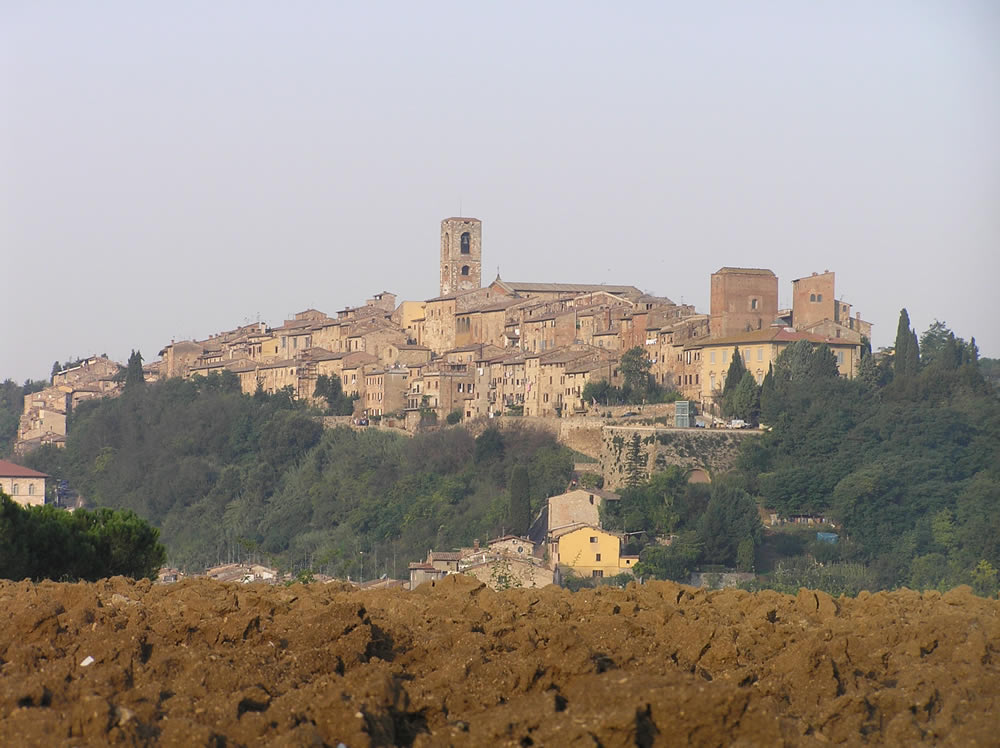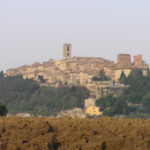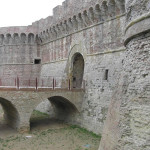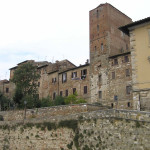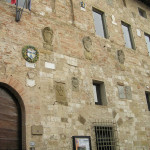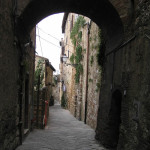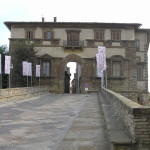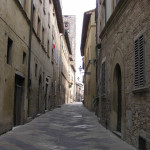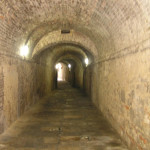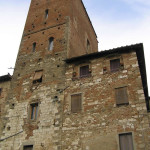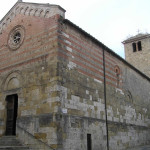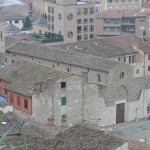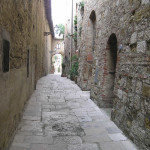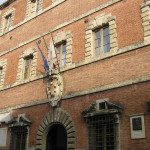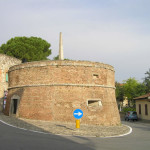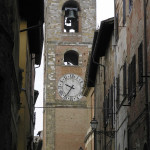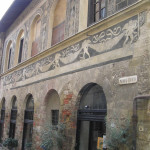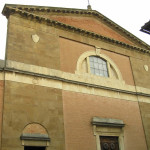Questo articolo è disponibile anche in:
![]() Français
Français ![]() Deutsch
Deutsch ![]() Español
Español ![]() Italiano
Italiano
Colle Val d’Elsa is located about 45 km from the exit of the A1 Firenze-Impruneta. From Firenze-Impruneta, take the Firenze-Siena highway towards Siena. You exit the freeway at exit Colle Val d’Elsa Nord. Colle Val d’Elsa is located less than an hour’s drive from the city of Siena, Florence, San Gimignano, Certaldo and Volterra.
Colle Val d’Elsa, was originally developed in three autonomous villages: the Borgo of Santa Caterina, the Castello di Piticciano and the Piano. The first two settlements are the oldest. The first mention to Colle Val d’Elsa date from the tenth century, then at the end of the twelfth century the village began to develop as a free commune, dating back to 1307 are the first municipal statutes. Subsequently it was always subject to Florence, and after the defeat of Siena, Colle became the seat of a diocese.
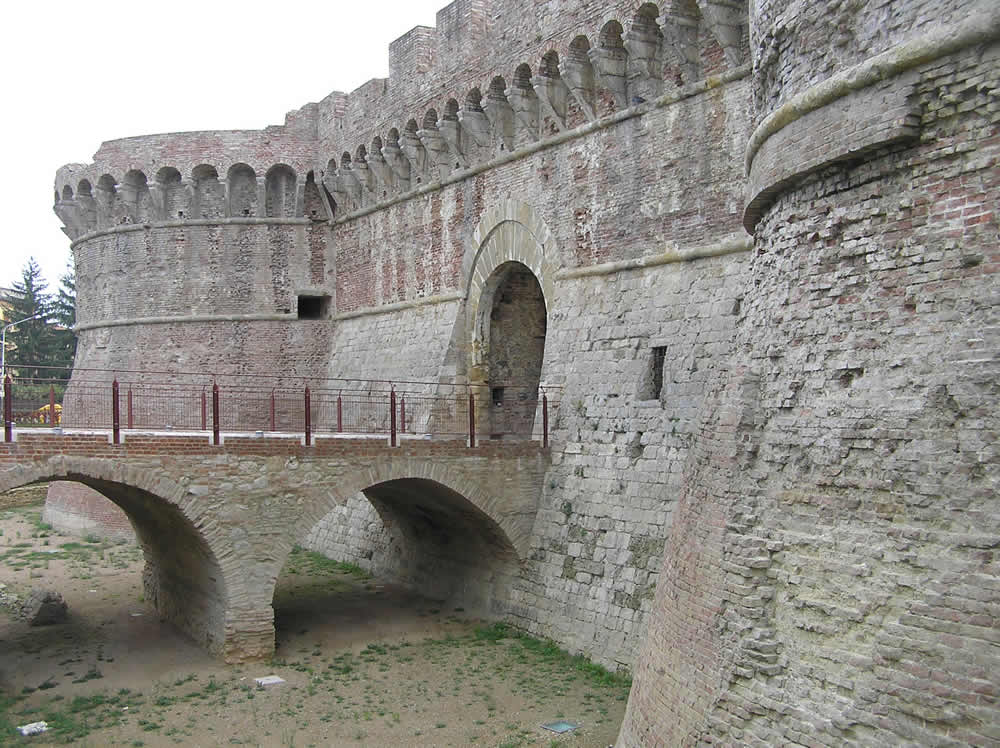
BORGO DI SANTA CATERINA
The visit of Colle Val d’Elsa can start from Colle Alta, this area of the town is surrounded by walls of the twelfth century.
You can park your car in a parking lot near the Porta Nuova (or Porta Salis), from where our walk begins, this gate is very beautiful, with two circular towers built in the 15th-16th century, probably designed by Giuliano da Sangallo.
We will enter then in the Borgo of Santa Caterina, in via Gracco del Secco flanked by buildings of the Conservatory of San Pietro and the Hospital of San Lorenzo (17th century).
Taking then the first road on the left, we arrived to a low circular tower, which was the old water cistern converted then into the tower in the eighteenth century. From here start an arched bridge that leads to the Church and the Convent of San Francesco (13th-18th century) with interesting inner cloisters with traces of frescoes.
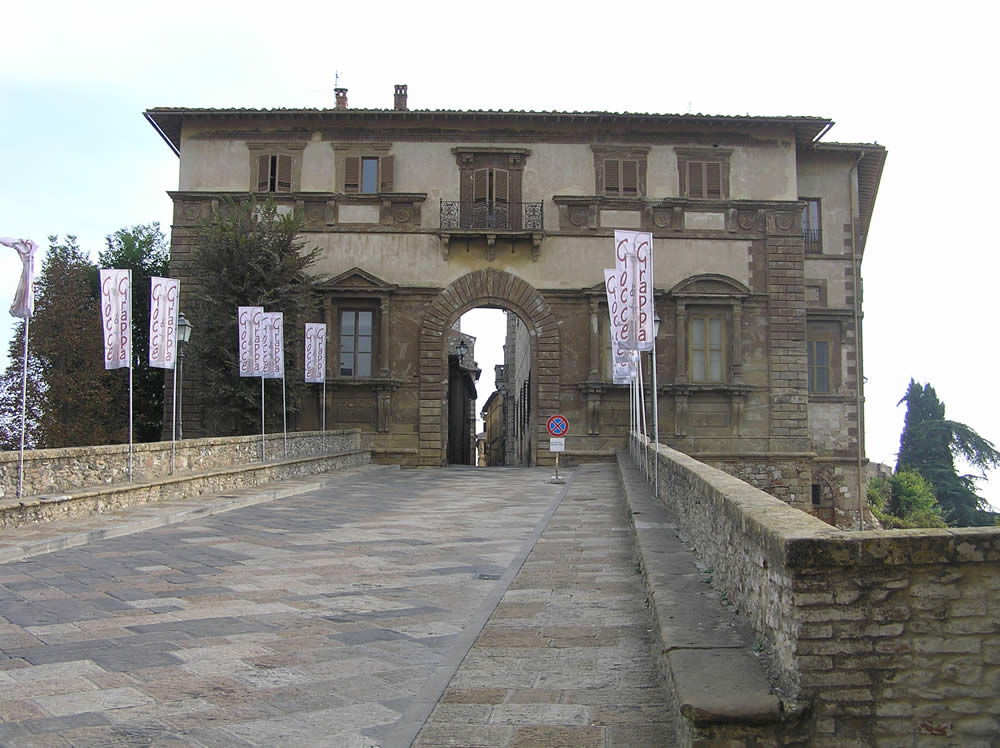
Going back and continuing along the via Gracco del Secco we reached the Palazzo Usimbardi and then the Church of Santa Caterina (15th century) it has, in the choir, an interesting stainde-glass window (15th century) and a terraccotta (17th century) perhaps work of the Cieco di Gambassi (Giovanni Francesco Gonnelli).
From the square in front of the church has a beautiful view of the Church and the Convent of San Francesco and part of the village of Colle. We continues along via F. Campana where are Palazzo Palazzuoli and Palazzo Portigiani (today the Town Hall) with brick facade and entrance and windows in ashlar stone.
THE CASTLE OF PITICCIANO (CASTELLO DI PITICCIANO)
From here the tour continues in the oldest part of Colle Val d’Elsa: the Castle of Piticciano.
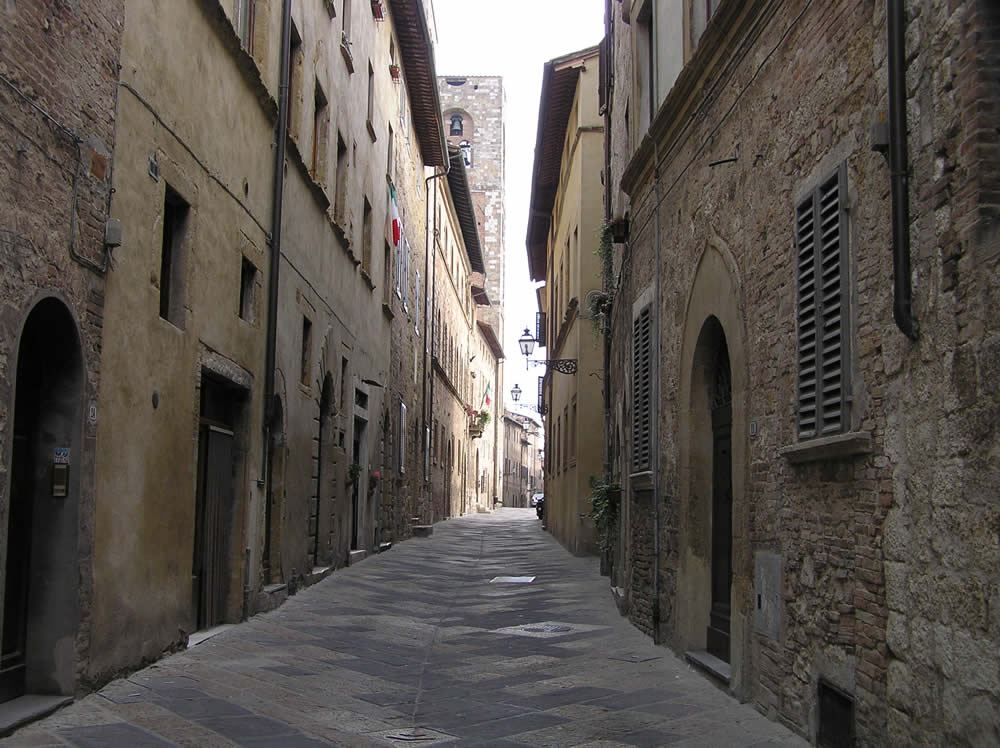
Continuing our walk we reach the Palazzo Campana, gateway to the oldest part of the town of Colle Val d’Elsa, the so-called Castle of Piticciano.
Palazzo Campana was built from 1539 by Giuliano di Baccio d’Agnolo, but its construction was not completed. The building is in the Mannerist style and its door leads into the picturesque Via del Castello where are some interesting buildings including the Palazzo del Capitano (16th century), the tower-house Marozzi (14th century) and Palazzo Giusti (15th century). From here you enter the Piazza del Duomo.
THE CATHEDRAL SQUARE
In the Cathedral Square (Piazza del Duomo) are several buildings of historical interest, coming from via del Castello from our own left clockwise are: Giusti Palace (15th century), Palazzo Pretorio (1335) with beautiful facade decorated with many coats of arms and today seat of the Archaeological Museum. We find therefore, the powerful quadrangular Bell tower of the Cathedral (17th century) and the neoclassic facade of the Cathedral (17th-19th century). The three-nave interior contains some works of art, including a pulpit marble of 1465, and in the Cappella del Chiodo a renaissance railing and a marble tabernacle, a bronze crucifix on the altar is by Giambologna.
Also in the Piazza del Duomo are the buildings of the Episcopal Palace and the Palace of the People with an adjacent fountain. From here starts also the tunnel of via delle Volte.
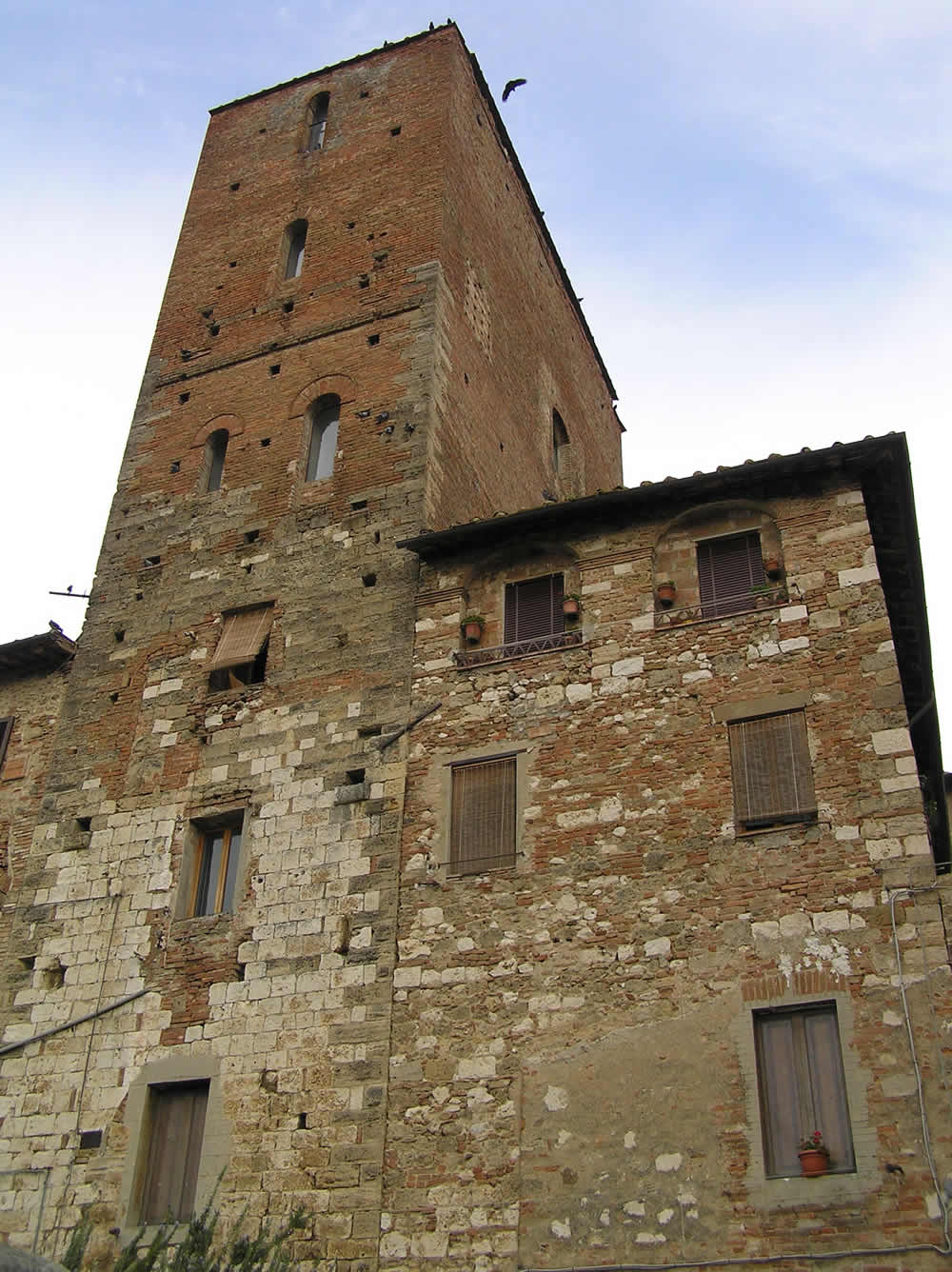
Continuing along the via del Castello we find on the right the Palace of the Priori, seat of the Civic and Sacred Art Museum, with a facade with a 15th century graffito decoration. A little further, on the left is the Teatro dei Varii, in origin (13th century) a former hospital along the via Francigena, with mullioned windows with central columns.
THE CHURCH OF SANTA MARIA IN CANONICA AND THE HOUSE-TOWERS
Then we arrive in Piazza Santa Maria in Canonica, where is the church of Santa Maria in Canonica (12th century) in Pisan-Romanesque style with beautiful rose-window in brick. Inside in addition to a tabernacle attributed to Pier Francesco Fiorentino are also remains of frescoes. The church tower houses, the Martinella, the bell ringing on a sienese “carroccio”, taken by Colle Guelph at the Battle of Colle in 1269.
In the last tract of via del Castello are located various medieval house-towers, this is one of the most picturesque and characteristic angles of Colle Val d’Elsa. Between the house-towers are that of Lorenzo Lippi (15th century) and that one where the tradition wants that was born Arnolfo di Cambio (13th century). He was a famous sculptor and architect (he projected, for example, Palazzo Vecchio in Florence). We arrived finally at the Baluardo, a bastion of the city walls which offers a magnificent panorama of Colle Bassa.
From here you can descend down towards Colle Bassa through the modern elevator placed in the center of the bastion or along the pedestrian road called “La Costa”. Another possibility is to return towards the medieval town passing through via delle Romite and then via di Mezzo, we reach the picturesque Via delle Volte, a tunnel about 100 meters long in the heart of Colle.
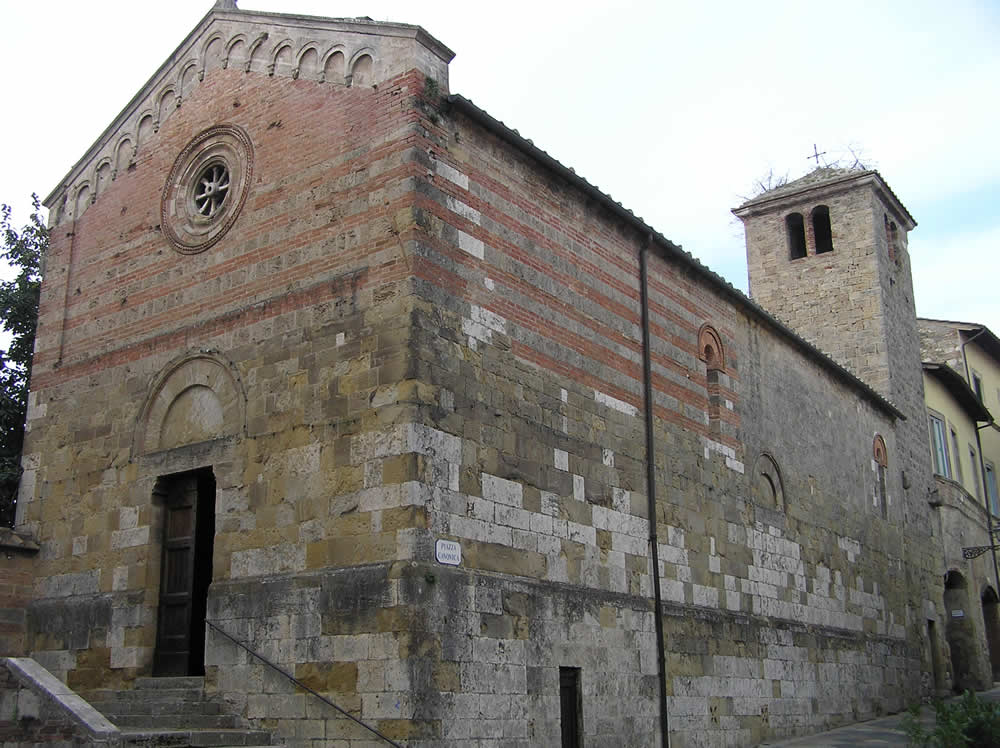
Colle Bassa has a mainly modern appearance. But looking carefully in this part of town you will find some interesting ancient witnesses as the small medieval church of Santa Maria di Spugna (10th century), the great church of Sant’Agostino (13th-16thcentury) and the arch of Porta Guelfa, one of the few remains of the town walls of the Piano.
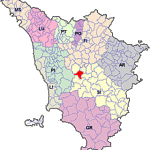
USEFUL INFORMATION:
Weekly Market in Colle Val d’Elsa: Friday
8.00-13.00
Tourist Information Offices – Colle Val d’Elsa
Ufficio Turistico Comunale
Piazza Arnolfo di Cambio, 9
tel. e fax +39 0577 921334
Information Offices – Colle di Val d’Elsa
Pro Loco Via Francesco Campana, 43
tel. +39 0577 922791 – fax +39 0577 922621
BIBLIOGRAPHY
- AA. VV. “Toscana” Guide Rosse Touring Club Italiano, 2007
- Bastianoni Curzio, Casprini Federica, Ninci Renzo “Guida storica illustrata di Colle di Val d’Elsa” 2011, Pacini Editore
- Cammarosano Paolo “Storia di Colle di Val d’Elsa nel Medioevo” 2012, CERM
Questo articolo è disponibile anche in:
![]() Français
Français ![]() Deutsch
Deutsch ![]() Español
Español ![]() Italiano
Italiano

